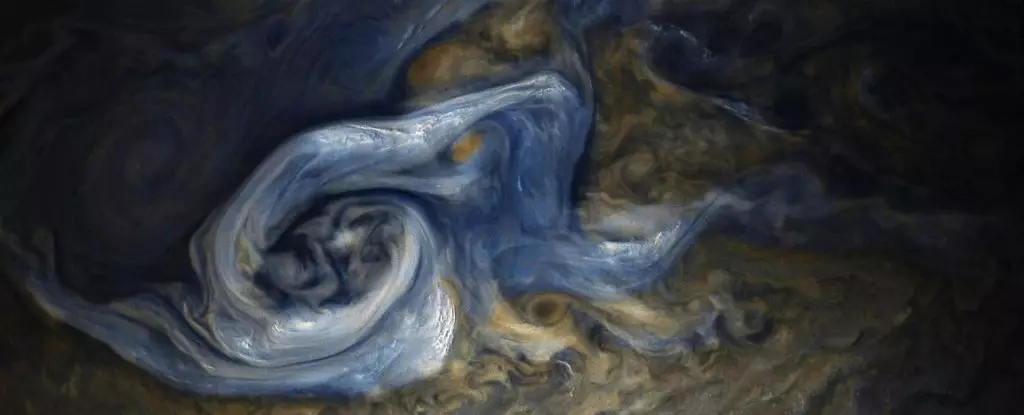Jupiter, the gargantuan gas giant of our Solar System, has long captivated astronomers with its colorful bands and tumultuous storms. Among its many peculiar characteristics lies a weather phenomenon that scientists are only just beginning to understand. Recent proposals have posited that during gigantic thunderstorms, Jupiter experiences a rather unexpected meteorological occurrence involving “mushballs”—unusual clumps of ice composed of ammonia and water. This striking revelation opens a floodgate of intrigue regarding the complexity of Jupiter’s atmospheric chemistry and raises significant questions about what constitutes weather in environments far different from our own.
The understanding of atmospheric phenomena on Jupiter, while fascinating, challenges our terrestrial-centric perception of weather. While concepts such as thunderstorms and rain are familiar to us, the extreme environment of Jupiter transforms these elements into an exotic dance of chemicals and forces, resulting in a unique atmospheric tableau that defies simple explanations.
The Mushball Hypothesis: A Paradigm Shift in Atmospheric Science
Initially proposed in a study from 2020, the mushball hypothesis suggests that immense storms on Jupiter eject water high into the atmosphere, where it encounters ammonia vapor at frigid altitudes. This interaction effectively creates mushballs—ice clumps that resemble a mix between wet snow and a slushy drink. When renowned planetary scientist Chris Moeckel and his colleagues from the University of California, Berkeley, and Caltech delved into examining this phenomenon, they faced a daunting challenge: Could such an unusual scenario really be true?
Moeckel’s three-year quest to validate or debunk the mushball theory is a testament to the rigor and skepticism that characterizes scientific inquiry. As he and his team explored vast datasets collected from the Juno spacecraft and the Hubble Space Telescope, they uncovered tantalizing evidence that supported this bizarre idea. The layers of Jupiter’s atmosphere are far more complex than previously understood, with storms functioning as engines that mix and transport materials at astonishing depths.
The Mechanics of Formation and Implications for Planetary Atmospheres
In their recent findings, the researchers articulated that mushballs are integral to the atmospheric dynamics at play in Jupiter’s troposphere. These storms effectively act as conduits, stripping the upper atmosphere of ammonia while simultaneously depositing it deeper into the planet. Their research emphasizes that the climate of giant planets cannot be understood by merely observing the cloud tops, as substantial processes occur far beneath the visible surface.
Moeckel’s enthusiasm about this discovery exemplifies the excitement and wonder surrounding the research. He reflected on how these mushballs, formed through a multifaceted interplay of both chemical and physical processes, further our understanding of atmospheric dynamics, not just on Jupiter but potentially across all gas giants. This phenomenon could indeed be a common aspect of planetary weather in our Solar System and beyond, highlighting the rich variety of celestial atmospheres.
Scientific Exploration and the Future of Atmospheric Research
Research into this peculiar mechanism is just the beginning. As scientists continue their exploration, they are left with lingering questions about whether similar processes occur on other gas giants like Saturn, Uranus, and Neptune. The implications of mushball mechanics might reverberate across the field of planetary sciences, prompting a reevaluation of how we study planetary atmospheres in general.
The potential for future missions, whether through enhanced telescopes or space probes, holds the key to expanding our comprehension of these enigmatic gas giants. As technology advances, the gathering of more comprehensive data will help determine whether mushball storms represent an isolated phenomenon on Jupiter or a universal characteristic of gas giant atmospheres.
Ultimately, the success of this ongoing inquiry into the mystical world of Jupiter’s atmosphere promises not only to alter our understanding of weather phenomena in the cosmos but also to fuel the human quest for knowledge about the universe we inhabit. In an age where space exploration is becoming more profound and pervasive, the allure of Jupiter’s mushball storms might very well serve as a rallying point for future discoveries in planetary science.


Leave a Reply